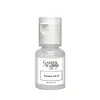What's inside
What's inside
 Key Ingredients
Key Ingredients

 Benefits
Benefits

 Concerns
Concerns

 Ingredients Side-by-side
Ingredients Side-by-side

Water
Skin ConditioningAzelaic Acid
BufferingButylene Glycol
HumectantDipropylene Glycol
Humectant1,2-Hexanediol
Skin ConditioningPropanediol
SolventCaprylic/Capric Triglyceride
MaskingPanthenol
Skin ConditioningCetyl Ethylhexanoate
EmollientButylene Glycol Dicaprylate/Dicaprate
EmollientSpirulina Platensis Extract
Skin ProtectingRhodomyrtus Tomentosa Fruit Extract
HumectantArtemisia Vulgaris Extract
Skin ConditioningCentella Asiatica Extract
CleansingSpinacia Oleracea Leaf Extract
Skin ConditioningBrassica Oleracea Italica Extract
AstringentTapioca Starch
Allantoin
Skin ConditioningBetaine
HumectantSodium Polyacryloyldimethyl Taurate
Emulsion StabilisingArginine
MaskingEthylhexyl Palmitate
EmollientSorbitan Isostearate
EmulsifyingAcrylates/C10-30 Alkyl Acrylate Crosspolymer
Emulsion StabilisingDextrin
AbsorbentCarthamus Tinctorius Flower Extract
Skin ConditioningGardenia Florida Fruit Extract
Skin ConditioningPolyacrylate-13
Hydrogenated Polyisobutene
EmollientPolyglyceryl-10 Laurate
Skin ConditioningCaprylyl Glycol
EmollientWater, Azelaic Acid, Butylene Glycol, Dipropylene Glycol, 1,2-Hexanediol, Propanediol, Caprylic/Capric Triglyceride, Panthenol, Cetyl Ethylhexanoate, Butylene Glycol Dicaprylate/Dicaprate, Spirulina Platensis Extract, Rhodomyrtus Tomentosa Fruit Extract, Artemisia Vulgaris Extract, Centella Asiatica Extract, Spinacia Oleracea Leaf Extract, Brassica Oleracea Italica Extract, Tapioca Starch, Allantoin, Betaine, Sodium Polyacryloyldimethyl Taurate, Arginine, Ethylhexyl Palmitate, Sorbitan Isostearate, Acrylates/C10-30 Alkyl Acrylate Crosspolymer, Dextrin, Carthamus Tinctorius Flower Extract, Gardenia Florida Fruit Extract, Polyacrylate-13, Hydrogenated Polyisobutene, Polyglyceryl-10 Laurate, Caprylyl Glycol
 Reviews
Reviews

Alternatives
Ingredients Explained
These ingredients are found in both products.
Ingredients higher up in an ingredient list are typically present in a larger amount.
Azelaic acid is a multitasker ingredient that helps treat acne, pigmentation, and irritation. It is a great option for sensitive skin.
What makes azelaic special?
The best thing about azelaic acid is it's gentleness. It's generally well-tolerated and safe to use alongside other actives like niacinamide or salicylic acid.
Unlike AHAs, azelaic acid will not make you photosensitive/sun sensitive.
You can find this ingredient naturally occurring in grains like wheat, rye, and barley. In cosmetics, azelaic acid is typically lab-made, which is more stable and effective.
Learn more about Azelaic AcidPanthenol is a common ingredient that helps hydrate and soothe the skin. It is found naturally in our skin and hair.
There are two forms of panthenol: D and L.
D-panthenol is also known as dexpanthenol. Most cosmetics use dexpanthenol or a mixture of D and L-panthenol.
Panthenol is famous due to its ability to go deeper into the skin's layers. Using this ingredient has numerous pros (and no cons):
Like hyaluronic acid, panthenol is a humectant. Humectants are able to bind and hold large amounts of water to keep skin hydrated.
This ingredient works well for wound healing. It works by increasing tissue in the wound and helps close open wounds.
Once oxidized, panthenol converts to pantothenic acid. Panthothenic acid is found in all living cells.
This ingredient is also referred to as pro-vitamin B5.
Learn more about PanthenolWater. It's the most common cosmetic ingredient of all. You'll usually see it at the top of ingredient lists, meaning that it makes up the largest part of the product.
So why is it so popular? Water most often acts as a solvent - this means that it helps dissolve other ingredients into the formulation.
You'll also recognize water as that liquid we all need to stay alive. If you see this, drink a glass of water. Stay hydrated!
Learn more about Water